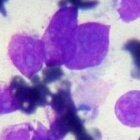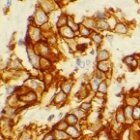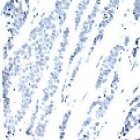Bioinformatics
Bioinformatics research articles, Bioinformatics research article, Bioinformatics journals, Bioinformatics journal, Bioinformatics articles, Bioinformatics




 Latest news
Latest news
- Author interview with Dr Esther Uña Cidón
-
- 26/Apr/2010
- Author interview with Dr Yoshihito Yokoyama
-
- 11/Mar/2010
- Author interview with Dr Ross Grant
-
- 11/Mar/2010
- Follow our open access journals on Twitter
-
- 11/Mar/2010
- Published in February
-
- 11/Mar/2010
- New article notifications in your in-box
-
- 22/Feb/2010
- Indian Journal of Clinical Medicine introductory editorial available
-
- 11/Feb/2010
- Published in January
-
- 11/Mar/2010
- Seven more journals added to CAS
-
- 26/Jan/2010
- Directory of Open Access Journals interview
-
- 28/Jan/2010
- Author interview with Dr Hiro Koshiyama
-
- 28/Jan/2010
- Author interview with Dr Nicolas Carels
-
- 22/Jan/2010
- Interview with Clinical Medicine Insights: Cardiology editorial board meber Dr Arnon Blum
-
- 12/Jan/2010
- Five more journals accepted by DOAJ
-
- 05/Jan/2010
- Open access articles published in December
-
- 04/Jan/2010
- Open access articles published in November
-
- 09/Dec/2009
- 2010 special issues
-
- 07/Dec/2009
- Proposals invited for Translational Oncogenomics special issue
-
- 07/Dec/2009
- Proposals invited for Signal Transduction Insights special issue
-
- 07/Dec/2009
- Proposals invited for Rehabilitation Process and Outcome special issue
-
- 07/Dec/2009
- Proposals invited for Primary Prevention Insights special issue
-
- 07/Dec/2009
- Proposals invited for Perspectives in Medicinal Chemistry special issue
-
- 07/Dec/2009
- Proposals invited for Palliative Care: Research and Treatment special issue
-
- 07/Dec/2009
- Proposals invited for Immunotherapy Insights special issue
-
- 07/Dec/2009

 Latest articles
Latest articles
- The Common FTO Genetic Polymorphism rs9939609 is Associated with Increased BMI in Type 1 Diabetes but not with Diabetic Nephropathy
- A Penalized Mixture Model Approach in Genotype/Phenotype Association Analysis for Quantitative Phenotypes
- Assessment of the Quality of Water from Hand-Dug Wells in Ghana
- Parathyroid Hormone’s Acute Effect on Vasodilatory Function
- Genes with Relevance for Early to Late Progression of Colon Carcinoma Based on Combined Genomic and Transcriptomic Information from the Same Patients
- Lessons Learned while Implementing an HIV/AIDs Care and Treatment Program in Rural Mozambique
- Viability of Bifidobacterium Pseudocatenulatum G4 after Spray-Drying and Freeze-Drying
- Comparative Population Growth of the Psocid Liposcelis yunnaniensis (Psocoptera: Liposcelididae) on Different Diets
- ALK-Positive Large B Cell Lymphoma—Unusual Subtype of Diffuse Large B Cell Lymphoma (DLBCL)
- Classical and Novel Prognostic Markers for Breast Cancer and their Clinical Significance
- Evaluation of Knowledge, Attitude and Performance of the Mothers of Children Affected by Cutaneous Leishmaniasis
- Network Robustness Due to Multiple Positive Feedback Loops: A Systematic Study of a Th Cell Differentiation Model
- Reconceptualizing Autism: Moving Beyond the Behavioral to Address Cause, Cure and Prevention
- Coffee-Induced Hypokalaemia
- Pharmacotherapy of Major Depressive Disorder: Focus on Desvenlafaxine Succinate
- Hemorrhagic Cystitis in a Patient Receiving Docetaxel for Prostate Cancer
- Co-existence of Ventricular Septal Defect and Bronchial Asthma in Two Nigerian Children
- Estimation of Hazard Functions in the Log-Linear Age-Period-Cohort Model: Application to Lung Cancer Risk Associated with Geographical Area
- Detection of RNA in the Plasma of Patients with Sporadic Creutzfeldt–Jakob Disease, Gerstmann–Straüssler Syndrome and Other Non-Transmissible Spongiform Encephalopathy Brain Disorders
- Pharmacotherapy of Chronic Heart Failure in the Elderly: A Review of the Evidence
Most read articles
- Current Status of Monocyte Differentiation-Inducing (MDI) Factors Derived from Human Fetal Membrane Chorion Cells Undergoing Apoptosis after Influenza Virus Infection
- Relationship Between the Plasma Concentration of C-Reactive Protein and Severity of Peripheral Arterial Disease
- Intraspecific ITS Variability in the Kingdom Fungi as Expressed in the International Sequence Databases and Its Implications for Molecular Species Identification
- Clinical Presentation and Histologic Findings at Ileocolonoscopy in Children with Autistic Spectrum Disorder and Chronic Gastrointestinal Symptoms
- A Simple Derivation of the Distribution of Pairwise Local Protein Sequence Alignment Scores
- DICOM Structured Reporting and Cancer Clinical Trials Results
- Mammoth and Elephant Phylogenetic Relationships: Mammut Americanum, the Missing Outgroup
- Evaluation of Two Outlier-Detection-Based Methods for Detecting Tissue-Selective Genes from Microarray Data
- Exploring the Evolutionary History of the Differentially Expressed Genes between Human Populations: Action of Recent Positive Selection
- Systems Biology-Based Identification of Crosstalk between E2F Transcription Factors and the Fanconi Anemia Pathway
- On the Adaptive Design Rules of Biochemical Networks in Evolution
- Phylogenetic diversity (PD) and biodiversity conservation: some bioinformatics challenges
- Fast Genes and Slow Clades: Comparative Rates of Molecular Evolution in Mammals
- Identification and Quantitation of Asparagine and Citrulline Using High-Performance Liquid Chromatography (HPLC)
- In Silico Promoter Analysis can Predict Genes of Functional Relevance in Cell Proliferation: Validation in a Colon Cancer Model
(previous 30 days)Site updates
Journal: Biomarker Insights
Journal: Cancer Informatics
Journal: Evolutionary Bioinformatics
Journal: Bioinformatics and Biology Insights
Journal: Biomedical Engineering and Computational Biology
A Penalized Mixture Model Approach in Genotype/Phenotype Association Analysis for Quantitative Phenotypes (27/Apr/2010)
A mixture normal model has been developed to partition genotypes in predicting quantitative phenotypes. Its estimation and inference are performed through an EM algorithm. This approach can conduct simultaneous genotype clustering and hypothesis testing. It is a valuable method for predicting the distribution of quantitative phenotypes among multi-locus genotypes across...
Genes with Relevance for Early to Late Progression of Colon Carcinoma Based on Combined Genomic and Transcriptomic Information from the Same Patients (23/Apr/2010)
Background: Genetic and epigenetic alterations in colorectal cancer are numerous. However, it is difficult to judge whether such changes are primary or secondary to the appearance and progression of tumors. Therefore, the aim of the present study was to identify altered DNA regions with significant covariation to transcription alterations...
Estimation of Hazard Functions in the Log-Linear Age-Period-Cohort Model: Application to Lung Cancer Risk Associated with Geographical Area (14/Apr/2010)
An efficient computing procedure for estimating the age-specific hazard functions by the log-linear age-period-cohort (LLAPC) model is proposed. This procedure accounts for the influence of time period and birth cohort effects on the distribution of age-specific cancer incidence rates and estimates the hazard function for populations with different exposures to...
Effect of Diet Supplementation on the Expression of Bovine Genes Associated with Fatty Acid Synthesis and Metabolism (31/Mar/2010)
Conjugated linoleic acids (CLA) are of important nutritional and health benefit to human. Food products of animal origin are their major dietary source and their concentration increases with high concentrate diets fed to animals. To examine the effects of diet supplementation on the expression of genes related to lipid...
Cancer is a disease associated with the deregulation of multiple gene networks. Microarray data has permitted researchers to identify gene panel markers for diagnosis or prognosis of cancer but these are not sufficient to make specific mechanistic assertions about phenotype switches. We propose a strategy to identify putative mechanisms of...
Characterization of the Effectiveness of Reporting Lists of Small Feature Sets Relative to the Accuracy of the Prior Biological Knowledge (18/Mar/2010)
When confronted with a small sample, feature-selection algorithms often fail to find good feature sets, a problem exacerbated for high-dimensional data and large feature sets. The problem is compounded by the fact that, if one obtains a feature set with a low error estimate, the estimate is unreliable because training-data-based...
Characterization of the Effectiveness of Reporting Lists of Small Feature Sets Relative to the Accuracy of the Prior Biological Knowledge (18/Mar/2010)
When confronted with a small sample, feature-selection algorithms often fail to find good feature sets, a problem exacerbated for high-dimensional data and large feature sets. The problem is compounded by the fact that, if one obtains a feature set with a low error estimate, the estimate is unreliable because training-data-based...
Multi-class cancer classification based on microarray data is described. A generalized output-coding scheme based on One Versus One (OVO) combined with Latent Variable Model (LVM) is used. Results from the proposed One Versus One (OVO) output- coding strategy is compared with the results obtained from the generalized One Versus All...
A Method to Detect Differential Gene Expression in Cross-Species Hybridization Experiments at Gene and Probe Level (05/Mar/2010)
Motivation: Whole genome microarrays are increasingly becoming the method of choice to study responses in model organisms to disease, stressors or other stimuli. However, whole genome sequences are available for only some model organisms, and there are still many species whose genome sequences are not yet available. Cross-species studies, where...
Expression a La Bimode (03/Mar/2010)
The recently published article by Wang, and commented on by Ertel in this journal, describes development of a method, named the Bimodality Index, to objectively identify and rank meaningful and reliable bimodal patterns from large-scale gene expression datasets. This is an important step because genes with a bimodal distribution may...
The Power of the Web in Cancer Drug Discovery and Clinical Trial Design: Research without a Laboratory? (18/Feb/2010)
The discovery of effective cancer treatments is a key goal for pharmaceutical companies. However, the current costs of bringing a cancer drug to the market in the USA is now estimated at $1 billion per FDA approved drug, with many months of research at the bench and costly clinical trials....
Evolutionary Pattern of N-Glycosylation Sequon Numbers in Eukaryotic ABC Protein Superfamilies (17/Feb/2010)
Many proteins contain a large number of NXS/T sequences (where X is any amino acid except proline) which are the potential sites of asparagine (N) linked glycosylation. However, the patterns of occurrence of these N-glycosylation sequons in related proteins or groups of proteins and their underlying causes have largely been...
Gene selection is of vital importance in molecular classification of cancer using high-dimensional gene expression data. Because of the distinct characteristics inherent to specific cancerous gene expression profiles, developing flexible and robust feature selection methods is extremely crucial. We investigated the properties of one feature selection approach proposed in our...
Gene selection is of vital importance in molecular classification of cancer using high-dimensional gene expression data. Because of the distinct characteristics inherent to specific cancerous gene expression profiles, developing flexible and robust feature selection methods is extremely crucial. We investigated the properties of one feature selection approach proposed in our...
Bimodal Gene Expression and Biomarker Discovery (04/Feb/2010)
With insights gained through molecular profiling, cancer is recognized as a heterogeneous disease with distinct subtypes and outcomes that can be predicted by a limited number of biomarkers. Statistical methods such as supervised classification and machine learning identify distinguishing features associated with disease subtype but are not necessarily clear or...
An Improved Approach for Mapping Quantitative Trait Loci in a Pseudo-Testcross: Revisiting a Poplar Mapping Study (04/Feb/2010)
A pseudo-testcross pedigree is widely used for mapping quantitative trait loci (QTL) in outcrossing species, but the model for analyzing pseudo-testcross data borrowed from the inbred backcross design can only detect those QTLs that are heterozygous only in one parent. In this study, an intercross model that incorporates the high...
Automated disease surveillance systems are becoming widely used by the public health community. However, communication among non-collocated and widely dispersed users still needs improvement. A web-based software tool for enhancing user communications was completely integrated into an existing automated disease surveillance system and was tested during two simulated exercises and...
Background: Gene set enrichment analysis (GSEA) is an analytic approach which simultaneously reduces the dimensionality of microarray data and enables ready inference of the biological meaning of observed gene expression patterns. Here we invert the GSEA process to identify class-specific gene signatures. Because our approach uses the Kolmogorov-Smirnov approach...
Background: The accurate prognosis for patients with resectable pancreatic adenocarcinomas requires the incorporation of more factors than those included in AJCC TNM system. Methods: We identified 218 patients diagnosed with stage I and II pancreatic adenocarcinoma at NewYork-Presbyterian Hospital/ Columbia University Medical Center (1999 to 2009). Tumor and clinical...
Bacterial autotransporters represent a diverse family of proteins that autonomously translocate across the inner membrane of Gram-negative bacteria via the Sec complex and across the outer bacterial membrane. They often possess exceptionally long N-terminal signal sequences. We analyzed 90 long signal sequences of bacterial autotransporters and members of the two-partner...
A Novel Approach for Analysis of the Log-Linear Age-Period-Cohort Model: Application to Lung Cancer Incidence (14/Dec/2009)
A simple, computationally efficient procedure for analyses of the time period and birth cohort effects on the distribution of the age-specific incidence rates of cancers is proposed. Assuming that cohort effects for neighboring cohorts are almost equal and using the Log-Linear Age-Period-Cohort Model, this procedure allows one to evaluate temporal...
Melanoma antigen family (MAGE) genes are widely expressed in various tumor types but silent in normal cells except germ-line cells lacking human leukocyte antigen (HLA) expression. Over 25 MAGE genes have been identified in different tissues, mostly located in Xq28 of human chromosome and some of them in chromosome 3...
Melanoma antigen family (MAGE) genes are widely expressed in various tumor types but silent in normal cells except germ-line cells lacking human leukocyte antigen (HLA) expression. Over 25 MAGE genes have been identified in different tissues, mostly located in Xq28 of human chromosome and some of them in chromosome 3...
A signal transduction pathway (STP) is a cascade composed of a series of signal transferring steps, which often activate one or more transcription factors (TFs) to control the transcription of target genes. Understanding signaling pathways is important to our understanding of the molecular mechanisms of disease. Many condition-annotated pathways have...
Discrimination of Carcinogens by Hepatic Transcript Profiling in Rats Following 28-day Administration (13/Nov/2009)
This study aimed at discriminating carcinogens on the basis of hepatic transcript profiling in the rats administrated with a variety of carcinogens and non-carcinogens. We conducted 28-day toxicity tests in male F344 rats with 47 carcinogens and 26 non- carcinogens, and then investigated periodically the hepatic gene expression profiles using...
The high sequence divergence within the small subunit ribosomal RNA gene (SSU rDNA) of foraminifera makes it difficult to establish the homology of individual nucleotides across taxa. Alignment-based approaches so far relied on time-consuming manual alignments and discarded up to 50% of the sequenced nucleotides prior to phylogenetic inference. Here,...
The high sequence divergence within the small subunit ribosomal RNA gene (SSU rDNA) of foraminifera makes it difficult to establish the homology of individual nucleotides across taxa. Alignment-based approaches so far relied on time-consuming manual alignments and discarded up to 50% of the sequenced nucleotides prior to phylogenetic inference. Here,...
Classifying Coding DNA with Nucleotide Statistics (28/Oct/2009)
In this report, we compared the success rate of classification of coding sequences (CDS) vs. introns by Codon Structure Factor (CSF) and by a method that we called Universal Feature Method (UFM). UFM is based on the scoring of purine bias (Rrr) and stop codon frequency. We show that the...
Introduction of Hypermatrix and Operator Notation into a Discrete Mathematics Simulation Model of Malignant Tumour Response to Therapeutic Schemes In Vivo. Some Operator Properties (21/Oct/2009)
The tremendous rate of accumulation of experimental and clinical knowledge pertaining to cancer dictates the development of a theoretical framework for the meaningful integration of such knowledge at all levels of biocomplexity. In this context our research group has developed and partly validated a number of spatiotemporal simulation models of...
Inferring Transcriptional Interactions by the Optimal Integration of ChIP-chip and Knock-out Data (21/Oct/2009)
How to combine heterogeneous data sources for reliable prediction of transcriptional regulation is a challenge. Here we present an easy but powerful method to integrate Chromatin immunoprecipitation (ChIP)-chip and knock-out data. Since these two types of data provide complementary (physical and functional) information about transcription, the method combining them is...






